Cats
Unveiling The Mysteries Of Siamese Cats: From Origins To Care And Beyond

Unveiling The Mysteries Of Siamese Cats: From Origins To Care And Beyond
Siamese cats are one of the most recognizable and beloved cat breeds in the world.
With their striking blue eyes, distinctive coat pattern, and vocal nature, Siamese cats have been popular pets for decades.
But beyond their unique appearance and personality, Siamese cats also have a rich history, fascinating health and care needs, and important considerations when it comes to training, socialization, and breeding.
In this article, we’ll explore everything you need to know about Siamese cats, from their origins to their care requirements, and help you understand what makes them such wonderful and beloved pets.
History of Siamese Cats
Siamese cats originated in Siam, which is now known as Thailand. They were considered to be royal cats and were kept by members of the royal family. The first Siamese cats were brought to Europe in the late 19th century, where they quickly gained popularity.
Ancient Origins of Siamese Cats
Siamese cats have a long and storied history that stretches back to ancient Siam, now known as Thailand. These cats were highly revered in their homeland and were often kept as sacred animals in temples and royal households.
According to some accounts, the first Siamese cats were brought to Siam by Buddhist monks, who valued them for their spiritual and mystical qualities.
Royal Cats of Siam
Over time, Siamese cats became associated with the Siamese royal family, who kept them as cherished pets and prized possessions. In fact, Siamese cats were so highly regarded that laws were put in place to protect them from theft and export.
Only the king and select members of the royal family were allowed to own and breed Siamese cats, and they were often given as gifts to foreign dignitaries and ambassadors.
Arrival in Europe and the West
Despite these restrictions, Siamese cats began to make their way to Europe in the late 19th century. The first recorded Siamese cat to arrive in England was a female named “Siam” who was given to the British Consul-General in Bangkok, Owen Gould, in 1884. From there, Siamese cats quickly gained popularity among cat fanciers in Europe and the United States.
Early Recognition and Breed Development
Siamese cats were first shown in England in 1885 at the Crystal Palace Cat Show, where they caused a sensation with their striking blue eyes and distinctive coloring.
In 1895, Siamese cats were also exhibited at the first cat show in America. Breeders soon began to focus on refining the breed, with a particular emphasis on coat color, body type, and other physical characteristics.
Modern Popularity
Today, Siamese cats are one of the most popular cat breeds in the world. They are recognized by all major cat registries and are known for their unique appearance, vocal nature, and outgoing personalities.
Despite their long and storied history, Siamese cats remain a beloved and cherished breed among cat lovers everywhere.
Unique Physical Characteristics
Siamese cats are instantly recognizable thanks to their unique physical characteristics. They have a long, slender body with a triangular-shaped head and large, upright ears.
Their eyes are almond-shaped and are typically blue, although some Siamese cats may have green or gold eyes. One of the most distinctive features of the Siamese cat is its coat, which is short, smooth, and glossy.
Color Points
Siamese cats are known for their “color points,” which are areas of darker color on their coat. The points can be seen on their face, ears, tail, and legs, and come in several different colors, including seal point (dark brown/black), blue point (gray/blue), chocolate point (dark brown), and lilac point (light gray/pink). Their eyes are almond-shaped and are typically blue.
Body Type
In addition to their striking color points, Siamese cats also have distinct body types. They are a “foreign” or “oriental” breed, which means they have a long, slender build and a graceful, elegant appearance.
Their legs are long and slender, and their paws are small and dainty. Siamese cats have a muscular body that is well-proportioned, with a long, thin tail that tapers to a point.
Weight and Size
Siamese cats are a medium-sized breed, with males typically weighing between 9-14 pounds and females weighing between 6-10 pounds.
They are slender cats, with long, thin bodies and sleek appearances. Siamese cats are also very agile and are known for their ability to jump high and run fast.
Coat Care
Their coat is short, smooth, and comes in several different colors, including seal point, blue point, chocolate point, and lilac point that require minimal grooming. They do shed, but not as much as some other cat breeds.
A weekly brushing with a soft bristle brush is usually sufficient to remove any loose hair and keep their coat shiny. Siamese cats are also known for their fastidious grooming habits and will often spend hours grooming themselves.
Overall, the Siamese cat’s unique appearance and striking color points make them a distinctive and beloved breed among cat lovers everywhere.
Their sleek, elegant build and expressive blue eyes only add to their charm and appeal.
Personality and Behavior of Siamese Cats
Siamese cats are known for their vocal nature and outgoing personalities. They love to be around people and are very social.
They are also very intelligent and can be trained to do tricks and even walk on a leash. However, they can be very demanding and require a lot of attention.
Vocal Nature
Siamese cats are known for their vocal nature and are often described as “talkative.” They are not afraid to express their opinions and will often meow, chirp, or even howl to get attention.
Siamese cats have a unique and distinctive vocalization that some people describe as sounding like a baby crying.
Outgoing Personality
In addition to their vocal nature, Siamese cats are also known for their outgoing personalities. They are very social cats and enjoy being around people.
They are often described as “people-oriented” and will follow their owners around the house, seeking attention and affection.
Siamese cats are also known for their playfulness and love of toys, which can help keep them mentally and physically stimulated.
Intelligent and Trainable
Siamese cats are very intelligent and can be trained to do a variety of tricks and behaviors. They are quick learners and enjoy using their minds to solve problems.
Siamese cats have been known to learn how to open doors, turn on faucets, and even fetch toys. They are also very trainable and can be taught to walk on a leash, use a scratching post, or perform other desired behaviors.
Demanding Attention
One thing to keep in mind when considering a Siamese cat as a pet is that it can be very demanding. They require a lot of attention and affection and do not like to be left alone for long periods of time.
Siamese cats may become bored or anxious if left alone too much, which can lead to destructive behaviors such as scratching or chewing on furniture.
Affectionate and Loyal
Despite their demanding nature, Siamese cats are also very affectionate and loyal. They form strong bonds with their owners and enjoy spending time with them.
Siamese cats are known for their purring and cuddling, which can provide a great deal of comfort and companionship to their owners.
Overall, Siamese cats are known for their unique and outgoing personalities, their vocal nature, and their high intelligence.
They make great pets for people who are looking for an interactive and engaging companion that can provide a great deal of affection and loyalty.
Health and Care of Siamese Cats
Siamese cats are generally healthy cats, but they are prone to certain health problems. These include dental problems, respiratory problems, and certain types of cancer.
It’s important to take your Siamese cat for regular check-ups with the veterinarian to ensure their health and well-being.
When it comes to care, Siamese cats require regular grooming to keep their coat in good condition. They should also be fed a high-quality diet that meets their nutritional needs.
It’s also important to provide them with plenty of toys and mental stimulation to keep them happy and healthy.
Health Issues
Like all cat breeds, Siamese cats are prone to certain health issues. Some of the most common health issues that Siamese cats may experience include:
- Dental problems: Siamese cats are prone to dental problems such as periodontal disease and tooth decay. Regular dental cleanings and check-ups are important for maintaining their dental health.
- Respiratory problems: Siamese cats may be more prone to respiratory problems such as asthma and bronchitis. It’s important to keep their environment clean and free of dust and allergens.
- Kidney disease: Some Siamese cats may be more prone to kidney disease and may require special diets or medications to manage the condition.
- Eye problems: Siamese cats may be more prone to eye problems such as glaucoma and cataracts. Regular eye exams can help detect and manage these conditions.
Care and Maintenance
Siamese cats are generally healthy cats, but they do require regular care and maintenance to keep them in good health. Some of the key aspects of caring for a Siamese cat include:
- Feeding: Siamese cats should be fed high-quality cat food that is appropriate for their age and activity level. It’s important to monitor their weight and adjust their food intake as needed to prevent obesity.
- Grooming: Siamese cats have short, smooth coats that require minimal grooming. Weekly brushing with a soft bristle brush can help keep their coat shiny and free of loose hair.
- Exercise: Siamese cats are active cats and require plenty of exercise and playtime to keep them mentally and physically stimulated. Interactive toys, scratching posts, and cat trees can help provide them with the exercise and entertainment they need.
- Veterinary care: Siamese cats should have regular check-ups with a veterinarian to ensure their health and well-being. It’s recommended to take them for a check-up at least once a year, or more frequently if they have any underlying health conditions.
Training and Socialization of Siamese Cats
Siamese cats are very intelligent and can be trained to do a variety of tricks and behaviors. However, they can also be stubborn and willful, so training should be done with patience and positive reinforcement.
It’s also important to socialize your Siamese cat from a young age to ensure they are comfortable around people and other animals.
Training Siamese Cats
Siamese cats are intelligent and trainable and can be taught a variety of behaviors and tricks. However, training a Siamese cat requires patience and consistency. Some tips for training a Siamese cat include:
- Use positive reinforcement: Siamese cats respond best to positive reinforcement training techniques. This means rewarding good behavior with treats, praise, or affection.
- Keep training sessions short and frequent: Siamese cats have a short attention span, so it’s important to keep training sessions short (around 10-15 minutes) and frequent (several times a day).
- Be consistent: Consistency is key when training a Siamese cat. Use the same commands and techniques each time you train, and avoid confusing them with mixed signals.
- Make training fun: Siamese cats enjoy using their minds to solve puzzles and problems. Make training fun by incorporating toys and games into the training sessions.
Socializing Siamese Cats
Siamese cats are social animals and enjoy being around people and other pets. Proper socialization is important for ensuring that a Siamese cat is comfortable and well-adjusted to their environment. Some tips for socializing a Siamese cat include:
- Start socializing early: Socialization should begin early, ideally when the Siamese kitten is still young. This can help them become comfortable with new people, pets, and environments.
- Gradually introduce new people and pets: Introduce new people and pets slowly and gradually, allowing the Siamese cat to get used to their presence over time.
- Use positive reinforcement: Reward good behavior with treats, praise, or affection to encourage positive associations with new people and pets.
- Provide plenty of social interaction: Siamese cats require plenty of social interaction and attention from their owners. Make sure to spend time playing, cuddling, and interacting with your Siamese cat each day.
Proper training and socialization are important for ensuring that a Siamese cat is well-behaved, well-adjusted, and happy in their environment.
With patience, consistency, and positive reinforcement, Siamese cats can be trained to do a variety of behaviors and tricks and can become loyal and affectionate companions.
Siamese Cats and Children
Siamese cats can make great pets for families with children, but it’s important to introduce them to each other properly and supervise their interactions.
Here are some things to keep in mind when introducing a Siamese cat to children:
- Teach children how to interact with cats: Children should be taught how to properly interact with cats, including how to pet them gently and how to approach them without scaring them.
- Supervise interactions: Adult supervision is important when children and cats are interacting. Make sure to supervise their interactions to ensure that the Siamese cat is safe and comfortable.
- Give the cat a safe space: Make sure that the Siamese cat has a safe space to retreat to if they feel overwhelmed or scared. This could be a room or a bed where the cat can go to be alone.
- Use positive reinforcement: Reward the Siamese cat for good behavior around children, and teach children to do the same. This can help encourage positive associations between the Siamese cat and children.
It’s also important to keep in mind that every cat is different, and some Siamese cats may not be comfortable around children. If you have concerns about your Siamese cat’s behavior around children, consult with a veterinarian or animal behaviorist for advice.
Common Misconceptions about Siamese Cats
There are several misconceptions about Siamese cats that are simply not true. For example, some people believe that Siamese cats are more aggressive than other breeds.
This is not true, and in fact, Siamese cats are known for their friendly and outgoing personalities. Here are some of the most common misconceptions about Siamese cats:
- Siamese cats are always loud and vocal: While Siamese cats are known for their vocal nature, not all Siamese cats are extremely vocal. Each cat has their own unique personality and behavior.
- Siamese cats are aggressive: Siamese cats are not inherently aggressive, but they can become aggressive if they feel threatened or scared. Proper socialization and training can help prevent aggression in Siamese cats.
- Siamese cats are high-maintenance: While Siamese cats do require attention and interaction, they are not necessarily high-maintenance. With proper care and attention, they can be very affectionate and well-behaved pets.
- Siamese cats are hypoallergenic: While no cat is completely hypoallergenic, some people believe that Siamese cats are less likely to cause allergic reactions than other breeds. However, this is not always the case, and individuals with allergies should spend time with a Siamese cat before adopting one.
- Siamese cats are always healthy: While Siamese cats are generally healthy cats, they can still be prone to certain health issues such as dental problems, respiratory problems, and kidney disease. Regular veterinary check-ups and proper care are important for maintaining their health and well-being.
It’s important to separate fact from fiction when it comes to Siamese cats and to understand their unique personalities and care requirements. With proper care, training, and socialization, Siamese cats can make great pets for families and individuals alike.
Siamese Cats and Other Pets
Siamese cats can get along well with other pets if they are introduced properly and given time to adjust to each other. Here are some tips for introducing a Siamese cat to other pets:
- Introduce slowly and gradually: Introduce the Siamese cat to other pets slowly and gradually, allowing them to get used to each other’s presence over time. This can help prevent conflicts and territorial behavior.
- Use positive reinforcement: Reward good behavior with treats, praise, or affection to encourage positive associations between the Siamese cat and other pets.
- Provide separate spaces: Give each pet its own separate space where it can retreat if it feels overwhelmed or scared. This can help prevent conflicts and reduce stress.
- Supervise interactions: Adult supervision is important when pets are interacting, especially during the initial introduction period. Make sure to supervise their interactions to ensure that they are safe and comfortable with each other.
- Consider the personality of each pet: Consider the personality of each pet when introducing them to each other. Some pets may be more dominant or territorial than others and may require more time and patience to adjust to a new companion.
It’s important to keep in mind that every pet is different, and some Siamese cats may not be comfortable around other pets.
If you have concerns about your Siamese cat’s behavior around other pets, consult with a veterinarian or animal behaviorist for advice.
With proper introductions and care, Siamese cats can coexist peacefully with other pets and make great companions.
Siamese Cat Breeding
Breeding Siamese cats can be a rewarding experience, but it requires careful planning, knowledge, and responsibility. Here are some things to keep in mind when breeding Siamese cats:
- Health and genetic testing: It’s important to ensure that the Siamese cats being bred are healthy and free of genetic diseases that can be passed on to their offspring. Genetic testing and health screenings can help identify potential health issues.
- Breed standards: Siamese cats have specific breed standards that should be followed when breeding. This includes characteristics such as eye color, coat color, and body type.
- Responsible breeding practices: Responsible breeding practices include breeding for the betterment of the breed, avoiding inbreeding and overbreeding, and providing proper care and socialization for the kittens.
- Legal considerations: Breeding Siamese cats may require permits or licenses depending on your location. It’s important to research and follow local laws and regulations related to breeding.
- Finding good homes: It’s important to find good homes for the Siamese kittens that are born. Responsible breeders should screen potential adopters and ensure that the kittens are going to loving, permanent homes.
It’s important to keep in mind that breeding Siamese cats requires a significant commitment of time, resources, and responsibility.
It’s important to ensure that breeding is done for the betterment of the breed and that the health and well-being of the cats and kittens involved are the top priority.
Conclusion
Siamese cats are a wonderful breed that make great pets for families and individuals alike. With their unique appearance and charming personalities, it’s easy to see why they are so popular.
By understanding their history, appearance, behavior, care, training, and common misconceptions, you’ll be well-equipped to provide the best possible care for your Siamese cat.
Remember, Siamese cats require a lot of attention and love, but they will reward you with a lifetime of affection and companionship.
Questions People Also Ask: (FAQs)
Are Siamese cats more vocal than other cat breeds?
Siamese cats are known for their vocal nature, but not all Siamese cats are extremely vocal. Each cat has their own unique personality and behavior.
How often should I groom my Siamese cat?
Siamese cats have short, smooth coats that require minimal grooming. It’s recommended to brush them once a week to remove any loose hair and keep their coat shiny.
Can Siamese cats be left alone for long periods of time?
Siamese cats are social cats and require a lot of attention and interaction. It’s not recommended to leave them alone for long periods of time, as they may become bored and unhappy.
Are Siamese cats good with children?
Siamese cats can be great pets for families with children. They are playful and love to interact with people. However, it’s important to supervise children around cats to ensure they are treating them gently and with respect.
How often should I take my Siamese cat to the veterinarian?
Siamese cats should have regular check-ups with the veterinarian to ensure their health and well-being. It’s recommended to take them for a check-up at least once a year.
Can Siamese cats be trained?
Siamese cats are very intelligent and can be trained to do a variety of tricks and behaviors. However, they can also be stubborn and willful, so training should be done with patience and positive reinforcement.
What should I look for in a Siamese cat breeder?
When looking for a Siamese cat breeder, it’s important to research thoroughly and ask for references. A reputable breeder will be able to provide you with information on the cat’s health history and lineage. They should also be committed to producing healthy, well-adjusted kittens.
We appreciate you for taking the time to read this article!
Finally, we hope you found this article interesting? And what do you think about ”Unveiling The Mysteries Of Siamese Cats: From Origins To Care And Beyond!?”
Please feel free to share or inform your friends about this article and this site, thanks!
And let us know if you observe something that isn’t quite right.
Cats
Clever Cats: Breeds That Learn Fast

Clever Cats: Breeds That Learn Fast
Cats have always fascinated us with their agility, independence, and sometimes enigmatic behavior. Among the vast array of feline breeds, some stand out for their remarkable intelligence and ability to learn quickly.
In this article, we will delve into the world of these exceptional cat breeds, exploring their unique characteristics, training capabilities, and what makes them such quick learners.
Whether you’re a seasoned cat owner or considering adopting a new feline friend, this comprehensive guide will help you understand the breeds that are not only intelligent but also a joy to train.
Why Intelligence Matters in Cats
Understanding Feline Intelligence
Feline intelligence is a multi-faceted trait that encompasses problem-solving abilities, social learning, and adaptability. Unlike dogs, cats often showcase their intelligence in more subtle ways, such as manipulating objects to get what they want or learning routines and commands.
Benefits of Owning Intelligent Cats
Owning an intelligent cat comes with several benefits. These cats are more interactive and engaging, making them excellent companions. They can learn tricks, follow commands, and even understand basic household rules, which makes living with them more enjoyable and less challenging.
Top Cat Breeds Known for Their Intelligence
Abyssinian
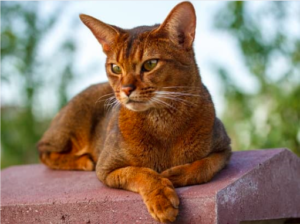
Overview
The Abyssinian is often hailed as one of the smartest cat breeds. Known for their curiosity and playful nature, Abyssinians are quick learners who thrive on mental stimulation.
Training and Activities
Abyssinians are highly trainable and enjoy interactive toys and puzzle feeders. They can learn tricks such as fetching and even walking on a leash. Their love for heights means they appreciate cat trees and climbing structures.
Siamese
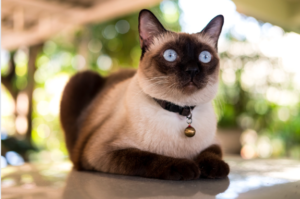
Overview
Siamese cats are not only intelligent but also highly vocal and sociable. They form strong bonds with their owners and are always eager to engage in activities.
Training and Activities
Siamese cats are quick to learn tricks and commands. They enjoy interactive play and can be trained to perform simple tasks like opening doors or retrieving items. Their vocal nature also makes them responsive to verbal cues.
Bengal
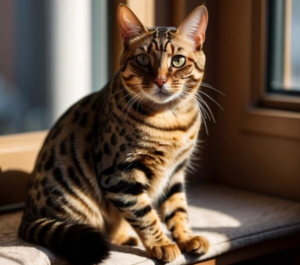
Overview
Bengals are known for their striking appearance and high energy levels. Their intelligence is reflected in their ability to solve problems and learn complex tasks.
Training and Activities
Bengals enjoy activities that challenge their minds, such as agility courses and puzzle toys. They can be trained to walk on a leash and perform tricks. Providing them with interactive playtime helps in channeling their energy positively.
Burmese

Overview
Burmese cats are affectionate, people-oriented, and intelligent. They enjoy being involved in family activities and can be trained to follow various commands.
Training and Activities
Burmese cats are quick learners and respond well to positive reinforcement. They enjoy learning tricks, playing fetch, and interactive games that stimulate their minds.
Scottish Fold

Overview
Scottish Folds are known for their distinctive folded ears and sweet demeanor. Despite their calm appearance, they are intelligent and can learn quickly.
Training and Activities
Scottish Folds enjoy interactive toys and games. They can learn tricks and commands and appreciate routines that keep their minds engaged.
Training Tips for Intelligent Cats
Start Early
Begin training your cat as early as possible. Kittens are more receptive to learning new behaviors and routines.
Use Positive Reinforcement
Reward your cat with treats, praise, or playtime whenever they successfully perform a desired behavior. Positive reinforcement strengthens the association between the action and the reward.
Keep Sessions Short and Fun
Cats have shorter attention spans than dogs, so keep training sessions brief and enjoyable. Incorporate playtime to make learning fun for your cat.
Be Patient and Consistent
Patience and consistency are key when training cats. Repeat commands and routines regularly, and avoid punishing your cat for mistakes. Consistency helps reinforce learning and builds trust.
Challenges of Training Intelligent Cats
Independence and Stubbornness
Intelligent cats can sometimes be independent and stubborn. They might choose to ignore commands if they are not in the mood, so it’s important to understand their behavior and work with it.
Need for Mental Stimulation
Highly intelligent cats require constant mental stimulation. Boredom can lead to behavioral issues, so ensure they have plenty of toys, activities, and interaction to keep their minds engaged.
Managing High Energy Levels
Breeds like Bengals have high energy levels that need to be managed. Providing them with enough physical and mental exercise is crucial to prevent destructive behavior.
Living with Intelligent Cats
Creating an Enriched Environment
An enriched environment is essential for intelligent cats. This includes a variety of toys, climbing structures, scratching posts, and interactive feeders to keep them stimulated.
Social Interaction
Intelligent cats thrive on social interaction. Spend quality time playing, training, and simply bonding with your cat to ensure they feel valued and engaged.
Understanding Their Needs
Each intelligent breed has its own unique needs and preferences. Understanding these and catering to them will help you build a strong and positive relationship with your cat.
Conclusion
Owning an intelligent cat can be an incredibly rewarding experience. These quick learners bring joy, challenge, and companionship to their owners. By understanding their unique characteristics and providing the right environment and training, you can foster a deep and fulfilling relationship with your feline friend.
Whether you choose an Abyssinian, Siamese, Bengal, Burmese, or Scottish Fold, you’re sure to enjoy the remarkable intelligence and personality they bring into your home.
Frequently Asked Questions (FAQs)
What makes a cat breed intelligent?
Intelligent cat breeds often show high levels of problem-solving abilities, adaptability, and social learning. They can quickly learn commands, tricks, and routines.
Can all cats be trained?
While some breeds are more receptive to training than others, all cats can be trained to some extent. Patience, consistency, and positive reinforcement are key to successful training.
What are the best toys for intelligent cats?
Interactive toys, puzzle feeders, and climbing structures are ideal for intelligent cats. These toys provide mental stimulation and keep them engaged.
How do I keep my intelligent cat from getting bored?
Provide a variety of toys, engage in regular playtime, and introduce new activities regularly. Rotating toys and creating an enriched environment also help prevent boredom.
Are intelligent cats more difficult to care for?
Intelligent cats can be more demanding in terms of mental stimulation and interaction. However, with the right approach and environment, they can be delightful companions.
We appreciate you for taking the time to read this article!
Finally, we hope you found this article interesting? And what do you think about ”Clever Cats: Breeds That Learn Fast!?”
Please feel free to share or inform your friends about this article and this site, thanks!
And let us know if you observe something that isn’t quite right.
Cats
The Enchanting Scottish Fold: A Guide to the Adorable Feline with Folded Ears
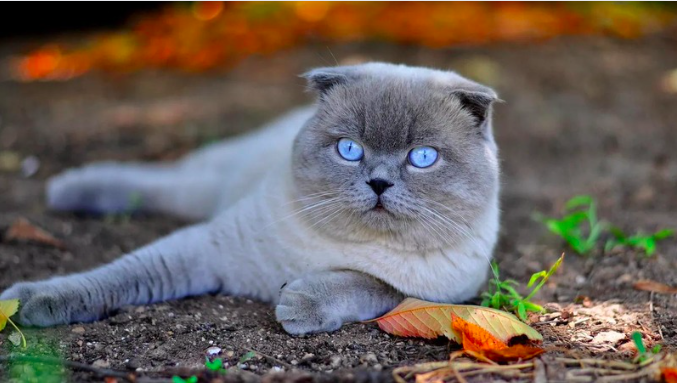
The Enchanting Scottish Fold: A Guide to the Adorable Feline with Folded Ears
Welcome to the world of the Scottish Fold cat, where charm and curiosity meet in an irresistibly adorable package. With their distinctive folded ears and sweet expression, Scottish Folds have captured the hearts of cat lovers around the world. Originally hailing from Scotland, these cats are known for their gentle demeanor, playful nature, and loving personality.
In this comprehensive guide, we will delve into the fascinating world of Scottish Fold cats, exploring their history, physical characteristics, personality traits, and care requirements. Whether you’re a seasoned cat owner or considering adding a feline friend to your family, the Scottish Fold’s unique charm and affectionate nature make them a delightful addition to any home. Join us as we unravel the enchanting tale of the Scottish Fold cat and discover why they are such beloved companions.
Fold
Overview
The Scottish Fold cat is a charming and distinctive breed known for its unique folded ears and sweet expression. Originating from Scotland in the 1960s, these cats have captured the hearts of many with their endearing appearance and affectionate nature. Scottish Folds are known for their gentle and loving temperament, making them wonderful companions for families and individuals alike.
History and Origins
The Scottish Fold breed traces its roots back to a white barn cat named Susie, who was found in Scotland in the early 1960s. Susie had a unique genetic mutation that caused her ears to fold forward, giving her an owl-like appearance. This trait was passed down to her kittens, and thus, the Scottish Fold breed was born. The breed quickly gained popularity for its distinctive look and friendly demeanor, and it was officially recognized by cat registries in the 1970s.
Physical Characteristics
- Folded Ears: The most distinctive feature of the Scottish Fold is its folded ears, which give the cat a sweet and owl-like appearance. Not all Scottish Folds have folded ears; some may have straight ears, known as “straights,” which are also common in the breed.
- Coat and Colors: Scottish Folds can have either a short or long coat, both of which are dense and plush. They come in a variety of colors and patterns, including tabby, tortoiseshell, and solid colors like white, black, and blue.
- Body Structure: Scottish Folds are medium-sized cats with a rounded appearance. They have sturdy bodies, round faces, and large, expressive eyes that give them a sweet and gentle expression.
Personality and Behavior
Scottish Folds are known for their calm and laid-back demeanor. They are affectionate cats that enjoy being around people and are often described as “lap cats” due to their love of cuddling. They are also known for their playful nature and enjoy interactive toys and games. Scottish Folds are generally good with children and other pets, making them a great choice for families.

Health and Care
- Ear Care: Due to their folded ears, Scottish Folds may be prone to ear infections. It’s important to regularly check and clean their ears to prevent issues.
- Grooming: Scottish Folds have dense coats that require regular grooming to prevent matting and tangling. Weekly brushing is usually sufficient to keep their coat in good condition.
- Health Concerns: Scottish Folds are generally healthy, but they may be prone to certain genetic conditions, including a skeletal disorder known as osteochondrodysplasia. Responsible breeding practices can help minimize the risk of these health issues.
Training and Activities
Scottish Folds are intelligent cats that can be trained to perform tricks and commands. They enjoy interactive play and benefit from toys that stimulate their minds and bodies. Providing them with scratching posts and other outlets for their natural behaviors can help keep them happy and healthy.
Compatibility with Families and Other Pets
Scottish Folds are known for their gentle and affectionate nature, making them great companions for families. They are good with children and other pets, including dogs, and can adapt well to different environments. Their loving and sociable nature makes them a popular choice for households looking for a friendly and affectionate pet.
Conclusion
The Scottish Fold cat is a unique and charming breed known for its folded ears and sweet expression. With their gentle demeanor and affectionate nature, Scottish Folds make wonderful companions for families and individuals alike. Whether you’re looking for a lap cat to cuddle with or a playful friend to keep you entertained, the Scottish Fold cat is sure to bring joy and companionship to your home.
FAQs about Scottish Fold Cats
Why do Scottish Folds have folded ears?
Scottish Folds have a genetic mutation that affects the cartilage in their ears, causing them to fold forward. This unique trait gives them their distinctive appearance.
Are Scottish Folds prone to ear problems due to their folded ears?
Yes, Scottish Folds may be more prone to ear infections due to the fold in their ears, which can trap dirt and moisture. Regular cleaning and monitoring of their ears can help prevent issues.
Do Scottish Folds have any health issues associated with their folded ears?
Scottish Folds may be prone to a condition called osteochondrodysplasia, which affects the development of their cartilage and bones. Responsible breeding practices can help reduce the risk of this condition.
Are Scottish Folds good with children and other pets?
Scottish Folds are known for their gentle and friendly nature, making them good companions for families with children and other pets. They enjoy socializing and being part of the family.
Do Scottish Folds require a lot of grooming?
Scottish Folds have dense coats that require regular grooming to prevent matting and tangles. Weekly brushing is recommended to keep their coat in good condition.
We appreciate you for taking the time to read this article!
Finally, we hope you found this article interesting? And what do you think about ”The Enchanting Scottish Fold: A Guide to the Adorable Feline with Folded Ears!?”
Please feel free to share or inform your friends about this article and this site, thanks!
And let us know if you observe something that isn’t quite right.
Cats
The Enchanting Burmese Cat: Affectionate, Playful, and Loyal

The Enchanting Burmese Cat: Affectionate, Playful, and Loyal
Enter the world of the Burmese cat, where elegance meets affection in a charming feline companion. Originating from the temples of Burma, these cats have captured the hearts of cat lovers worldwide with their striking appearance and loving nature. With their sleek coats, expressive eyes, and playful demeanor, Burmese cats are not just pets; they are cherished members of the family.
In this comprehensive guide, we delve into the captivating world of Burmese cats, exploring their history, physical characteristics, personality traits, and care requirements. Whether you’re a seasoned cat owner or considering adding a feline friend to your family, the Burmese cat’s unique blend of beauty, intelligence, and affection is sure to captivate you. Join us as we unravel the enchanting tale of the Burmese cat and discover why they are such beloved companions.
Burmese
Overview
The Burmese cat is a breed known for its striking appearance and affectionate nature. Originating from Burma (now Myanmar), these cats are renowned for their sleek, muscular bodies, expressive eyes, and silky coats. Burmese cats are often described as “people-oriented,” as they form strong bonds with their human companions and enjoy being part of the family. Their playful and curious nature makes them delightful companions for both children and adults alike.
History and Origins
The history of the Burmese cat can be traced back to ancient Burma, where they were considered sacred and kept by monks in temples. They were later brought to the West in the early 20th century and quickly gained popularity for their striking appearance and affectionate personality. The breed has since become a favorite among cat enthusiasts worldwide, known for its loving and loyal nature.
Physical Characteristics
- Coat and Colors: Burmese cats have short, sleek coats that lie close to the body. They come in a variety of colors, including sable, champagne, blue, and platinum. The coat is soft and silky to the touch, adding to the breed’s overall charm.
- Body Structure: Burmese cats are medium-sized with a muscular build. They have rounded heads, large, expressive eyes, and short, straight noses. Their compact bodies give them a sturdy appearance, and they move with grace and agility.
- Eyes and Ears: Their eyes are one of their most striking features, being large, expressive, and usually a deep, rich color that complements their coat. Their ears are medium-sized, slightly rounded at the tips, and set wide apart on the head.
Personality and Behavior
Burmese cats are known for their affectionate and sociable nature. They are often described as “dog-like” due to their tendency to follow their owners around the house and seek out human companionship. They are also highly intelligent and enjoy interactive play, making them great companions for families with children or other pets.
In addition to their affectionate nature, Burmese cats are also known for their vocalizations. They have a soft, sweet voice that they use to communicate with their owners, often engaging in “conversations” and expressing their needs and desires.
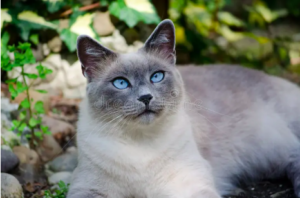
Health and Care
- Grooming: Burmese cats have short coats that require minimal grooming. Weekly brushing is usually sufficient to remove loose hair and keep their coat shiny. They also benefit from regular dental care to prevent oral health issues.
- Diet: A high-quality, balanced diet is essential for maintaining the health and vitality of Burmese cats. They should be fed a diet that is appropriate for their age, size, and activity level to ensure they receive the nutrients they need.
- Health Concerns: Burmese cats are generally healthy, but they can be prone to certain genetic conditions such as hypertrophic cardiomyopathy (HCM) and diabetes. Regular veterinary check-ups and a healthy diet can help manage these risks.
Training and Activities
Burmese cats are intelligent and can be trained to perform various tricks and commands. They enjoy interactive play and thrive on mental stimulation. Providing them with toys, puzzle feeders, and opportunities for play can help keep them entertained and prevent boredom.
Compatibility with Families and Other Pets
Burmese cats are known for their loving and social nature, making them great companions for families. They get along well with children and other pets, including dogs, as long as they are properly introduced. Their affectionate demeanor and playful nature make them a popular choice for households looking for a friendly and engaging pet.
Conclusion
The Burmese cat is a breed beloved for its affectionate nature, striking appearance, and playful personality. Whether you are looking for a loyal companion or a playful friend, the Burmese cat is sure to bring joy and warmth to your home. With their loving nature and sociable demeanor, Burmese cats make wonderful pets for families and individuals alike, enriching their lives with their presence and affection.
FAQs about Burmese Cats
What is the temperament of a Burmese cat like?
Burmese cats are known for their affectionate and social nature. They are often described as “dog-like” due to their loyalty and tendency to follow their owners around the house. They enjoy being involved in family activities and form strong bonds with their human companions.
Are Burmese cats good with children and other pets?
Yes, Burmese cats are generally good with children and other pets. They are playful and enjoy interactive play, making them great companions for families with children. They also get along well with other pets, including dogs, especially if they are introduced properly.
Do Burmese cats require a lot of grooming?
Burmese cats have short, sleek coats that require minimal grooming. Weekly brushing is usually sufficient to remove loose hair and keep their coat shiny. They also benefit from regular dental care to prevent oral health issues.
Are Burmese cats vocal?
Burmese cats are known for their soft, sweet voice, but they are not excessively vocal. They use their voice to communicate with their owners, often engaging in “conversations” and expressing their needs and desires.
What kind of environment is best for a Burmese cat?
Burmese cats thrive in environments where they have plenty of opportunities for play and interaction. They enjoy being part of the family and should have access to toys, scratching posts, and other enrichment activities. They also enjoy having access to outdoor enclosures or safe outdoor spaces where they can explore and indulge their natural instincts.
We appreciate you for taking the time to read this article!
Finally, we hope you found this article interesting? And what do you think about ”The Enchanting Burmese Cat: Affectionate, Playful, and Loyal!?”
Please feel free to share or inform your friends about this article and this site, thanks!
And let us know if you observe something that isn’t quite right.
-

 Pet Care2 years ago
Pet Care2 years agoThe Best Dog Collars For 2022
-

 Dogs2 years ago
Dogs2 years agoBichon Frise: The Happy, Playful, and Cuddly Companion
-

 Trending Pet Stories1 year ago
Trending Pet Stories1 year ago2023 ‘World’s Ugliest Dog’ Winner: Scooter’s Tale of Resilience
-

 Animals3 years ago
Animals3 years agoAre There Animals Having Down Syndrome?
-

 Pets2 years ago
Pets2 years agoThe Fascinating World Of The Red Chameleon
-

 Dogs3 years ago
Dogs3 years agoTop 10 Most Popular Dog Breeds According To AKC.
-

 Dogs3 years ago
Dogs3 years ago21 Dog Breeds That Resemble Bears Or Teddy Bears!
-

 Dogs3 years ago
Dogs3 years agoEskimo Dogs from Canada – What Are They? – Find Out!









